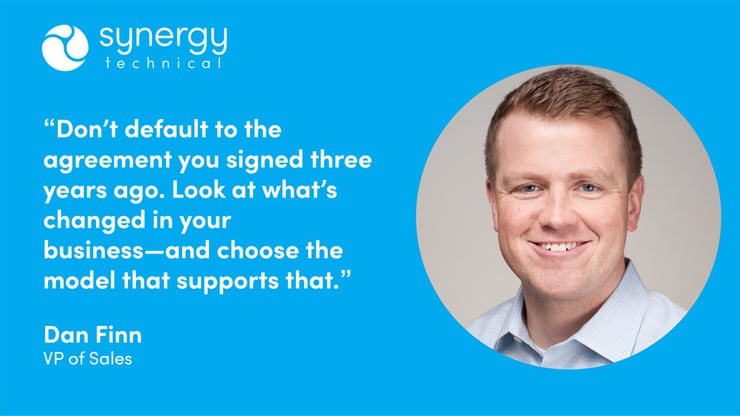Enterprise Licensing at a Crossroads: What I Tell Customers Looking Beyond the EA
When you’ve got over 1,500 users in your Microsoft environment, licensing isn’t just a line item—it’s a strategic lever. And for years, the default move was simple: sign another Enterprise Agreement. Lock it in. Forget about it for three years.
But that model doesn’t serve today’s enterprise the way it used to.
I started my career selling Microsoft licensing, focused entirely on Enterprise Agreements. And what I’m seeing now is a very real shift in how enterprise customers—especially those in the 1,500 to 5,000 seat range—are approaching licensing strategy.
The EA isn’t always the right answer anymore. And Microsoft knows it.
Read more about Microsoft CSP:
The Reality: Microsoft Is Steering Enterprises Toward CSP
There’s a misconception that CSP is only for SMBs or commercial customers under 1,000 seats. That’s no longer true. We’re now helping organizations with 1,500, 2,000, even 4,000+ users make the move from EA to CSP—and seeing real benefits.
Why? Because CSP provides something enterprise IT teams are increasingly demanding:
agility, transparency, and better support.
What Enterprise Customers Are Telling Me
Here’s what I consistently hear from the enterprise buyers I work with:
- “I don’t want to commit to three years when my workforce changes every quarter.”
- “Our LSP isn’t proactive. I didn’t even know licensing had changed until we had an issue.”
- “I’m tired of shelfware. I want a monthly number that actually reflects what we use.”
These aren’t small concerns. They speak to a deeper frustration: legacy licensing models weren’t built for the pace of modern IT. CSP, by contrast, is built around real-time value.
CSP at Enterprise Scale: What It Looks Like
At Synergy Technical, we support enterprise customers with large, complex Microsoft environments. That includes:
- Consolidated billing and license visibility across business units
- Monthly true-ups based on actual usage, not forecasted guesses
- Dedicated licensing experts who understand enterprise priorities
- Proactive communication around Microsoft product and policy changes
And most importantly? We support what we sell. Our engineers and product teams are certified in the solutions we license. That means our customers don’t get handed off—they get real answers, fast.
EA vs CSP: It’s Not About Size—It’s About Fit
If your organization has over 1,500 seats, you may still have the option of staying in an EA. But the real question is: should you?
If your goals include:
- Reducing operational overhead tied to license management
- Increasing agility around hiring, M&A, and seasonality
- Gaining better support without paying for Premier
...then CSP might actually be a better strategic fit.
I’ve spent my career helping customers make smarter decisions about Microsoft licensing. And here’s what I tell every enterprise buyer:
“Don’t default to the agreement you signed three years ago. Look at what’s changed in your business—and choose the model that supports that.”
If you're rethinking your EA or just looking for a second opinion, let’s talk. You deserve a licensing partner who’s fluent in enterprise complexity and committed to long-term value.
By Dan Finn, VP of Sales, Synergy Technical.
Ready to transform your licensing strategy? Contact us today to schedule a consultation, learn more about the Microsoft CSP licensing benefits, or start optimizing your Microsoft cloud services with a trusted partner by your side. Let’s modernize your cloud journey together!





Comments